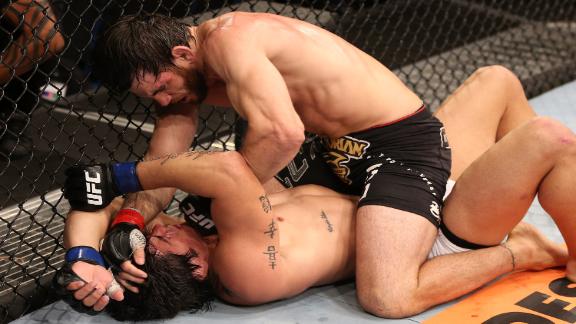Nutrition and Martial Arts
It happens at every school I have trained during my 15 years
trying to get better at Jiu Jitsu and MMA, a new, young guy joins the school
and is big, athletic and has a good amount of muscle. A month later he is 15lbs lighter, nursing a
bunch of injuries and probably has a cold or some other immune related illness. A lot of the time the guy drops out and he is
never seen at the school again, what a shame.
While many of us participate in martial arts for various reasons (to
stay fit, to learn, to become a fighter etc.), it’s critical that we understand
what we are doing to our bodies and how proper nutrition and supplementation
plays a critical role in optimizing performance, recovery and the ability to
grow and progress in the various disciplines we are competing in or learning.
First, what are we doing to our bodies when we train in this
sport?
- Aerobic and An-Aerobic Exercise. Our sport is a unique blend of aerobic (heart rate intensive, non-weight bearing) and an-aerobic exercise (weight bearing or resistance). You have to have your heart pumping as you move your body and you have to be strong to punch, kick or get the 230lb monster off of you if you are rolling around on the mats. His/her bodyweight and your movement create a unique blend of cardio and strength training rarely found in a regular gym. An-aerobic or esistance training is similar to weight training and what you are doing is breaking down your muscles through weight lifting so that they will grow back stronger. The growing back stronger requires adequate rest and proper nutrition or you will do more damage to your body.
- Stretching – Pulling – Kicking/Punching. Your body is not made for all this stretching, reaching, pulling on joints and slamming or being slammed into. Your body uses rest and nutrients you provide it to repair the damage. Improper nutrition will not provide your body the means to recover if you need to keep training hard.
- Protein. Increase your protein to at least 1g per pound of body weight per day. For example, if you weigh 180lbs, then you should get AT LEAST 180g of protein per day. Protein sources include chicken, lean meats, fish, dairy products, lean pork, protein shakes and protein bars. Your body can only absorb about 40-50g of protein in one sitting and that will give you about 3-4 hours of repair and protection for your muscles with each serving. Therefore, you must consume smaller more frequent meals of protein every 3-4 hours to reach your goal of 1g per pound of body weight. With the right amount of protein, your body will protect your muscles during exercise and burn more fat, which is a good thing. This seems hard to get this much protein, but at our store we have lots of great ways to reach your protein goals that taste great and are convenient through bars (Power Crunch) or shakes (Pro Complete 40, Myofusion Elite, Syntha 6).
- Water. You should be drinking at least a gallon of water every day and a little more on training days if possible. Water helps to move nutrients around your body and helps revitalize the cells and speed recovery.
- Vitamins – Minerals – Electrolytes. A good multi-vitamin (Envie, Vita-Boost) will usually do the trick for replacing the vitamins and minerals you lose due to your intense training. Right before, during and after your workout you should consider adding a sports drink with a little protein.
- Glutamine. Glutamine (CNS Glutamine) is the most abundant amino acid found in your muscle tissues and is found in most protein sources. Glutamine reduces muscle soreness, fatigue and speeds the recovery of your body by increasing your growth hormone levels, improving the process of converting protein to energy and building your body’s immune system. Take 5-10g of protein in your post-workout shake and one more similar dose before bed every day.
- Joint Repair. If you are experiencing joint and tendon pain, then you may also consider adding in a multi-faceted join formula (CNS Joint Support, Fluid Motion) that will help your tendons rebuild and repair. Like Glutamine does with muscle fibers, Glucosamine, Chondroitin and MSM are three ingredients your body will use to ease the pain and improve overall joint health.
- Other optional supplements. A Pre-Workout Product (Cardio Igniter, NO Xplode etc.) that provides you a energy and endurance boost and perhaps some Creatine for additional strength may help you train after a long day at work. Essential Fatty Acids (EFA) are your Omega -3, -6, and -9 fats that come from nuts, fish oils, flaxseed and the like. If you don’t cook with these oils or have them in your diet then you may also consider adding them into your supplement regimen to aid in cardiovascular, joint repair and improve your body’s growth hormone levels.
Everything listed so far, can be taken by both men and women, but men in
particular as they get over 30, may also want to consider a natural testosterone
booster (Fina Flex 1-Alpha, Vita-T, Pure Test).
Testosterone levels decline as men age and if we naturally boost them we
will aid our body’s ability to repair it, protect and grow muscle, maintain
stamina, strength and energy.Putting the right combination of diet and supplements
together for you will help you improve your performance in martial arts as well
as re-make your body. Every day, our
Certified Fitness Coaches at 4X Nutrition Center works with our clients to
determine the right diet and supplement program to reach their goals for their
sport and their body. We provide free
diet and supplement consultations to all FFA members and FFA members also
receive a discount in our store every time they shop.



No comments:
Post a Comment